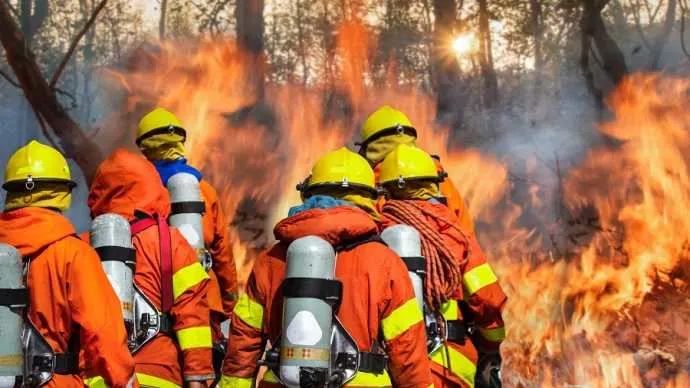
Billion dollar weather and climate disaster bill for 2018
The U.S. alone experienced 14 separate billion-dollar disasters in 2018.
The number of weather and climate related disasters in the U.S. has been growing this decade and the list is getting even longer after seeing what 2018 has added up to. This past year was very active in terms of weather and climate events, with the U.S. alone experiencing 14 separate billion-dollar disasters: one drought event, eight severe storm events, two tropical cyclone events, one wildfire event, and two winter storm events. Overall, these events resulted in the deaths of 247 people and had significant economic effects on the areas impacted, according to a new report released by NOAA.
The years 2017 and 2016 were also historic in the number of billion figure disasters impacting the U.S. In total, the last three years add-up an astonishing 45 extreme events, equivalent to an average record of 15 disasters per year -- well above the annual inflation-adjusted average of 6.2 events per year (1980-2018). Last year's weather and climate disasters also marked the 4th highest total costs (US$91.0 billion). The combined costs of the 2018 disasters trails only the years 2017 (US$312.7 billion), 2005 (US$220.8 billion) and 2012 (US$128.6 billion) when all years are inflation-adjusted to January 2019 dollars.
Image courtesy of NOAA.
The longer term numbers totalled by NOAA's National Center for Environmental Information (NCEI) are even more jaw-dropping. Since 1980, the U.S. has sustained 241 weather and climate disasters where the overall damage costs reached or exceeded US$1 billion, and the total bill for these 241 events exceeds US$1.6 trillion.
SEE ALSO: Climate change is altering the colour of our oceans
Global temperatures in 2018 were 1.06oC above pre-industrial average values making it the 4th warmest year after 2016, 2017 and 2015, buy only the second warmest year on record without an El Niño event behind 2017. Actually, Earth's five warmest years on record have occurred during the past five years, and the warmest 20 in the last 22 years. There is a clear warming trend which implies excess energy available for extreme weather and climate magnification.
Image courtesy of NOAA.
Two major hurricanes -- Michael (US$25 billion) and Florence (US$24 billion) -- were responsible for a large portion of the bill, together with the California wildfires which added another US$24 billion to the total.
Hurricane Florence impacted the North Carolina coast on September 14th. This slow-moving storm, with heavy rain, storm surge and record flooding was one of the deadliest and costliest to affect the Carolinas.
On October 10th, Hurricane Michael made landfall near Mexico Beach, Florida with sustained winds of 250 km/h. It was the third most intense hurricane to make landfall in the contiguous United States based on central pressure, and the fourth most intense based on wind speed.
**RELATED: **Earth just suffered through its 4th hottest year on record
Image courtesy of NOAA.
Last year ended with two devastating wildfires in the state of California. In November the Camp Fire scorched close to 153,000 acres in Northern California causing 88 fatalities, destroying 18,000 structures and making it the most destructive wildfire in the state's history. Southern California was at the same time affected by the Woolsey Fire which destroyed 1,500 structures and forced the evacuation of thousands in the Los Angeles area.
Image courtesy of NOAA.
Experts say the number and cost of these disasters are on the rise due to a combination of several factors. The increase in population and material wealth over the past several decades are an important factor for the increased damage potential. More wealth means greater costs and more people multiplies that number by a considerable factor.
The problem grows due to the increase of population centres and infrastructure in vulnerable areas like forests, coastal areas or flood plains. Climate Change does the rest by increasing the frequency of extreme weather and climate events. Some areas become more vulnerable to drought, wildfire season is lengthening especially in the western states and the potential for heavy rainfall events is growing in the eastern U.S.
__WATCH BELOW: OUR OCEANS ARE ACTUALLY CHANGING COLOUR. HERE'S WHY __
Source: NOAA











